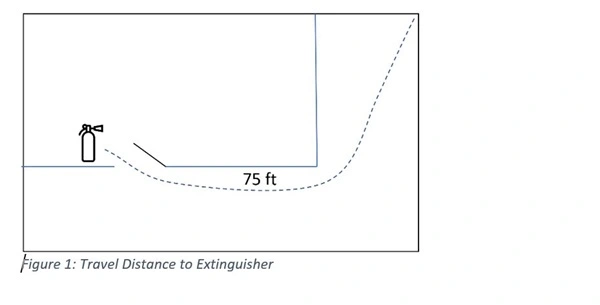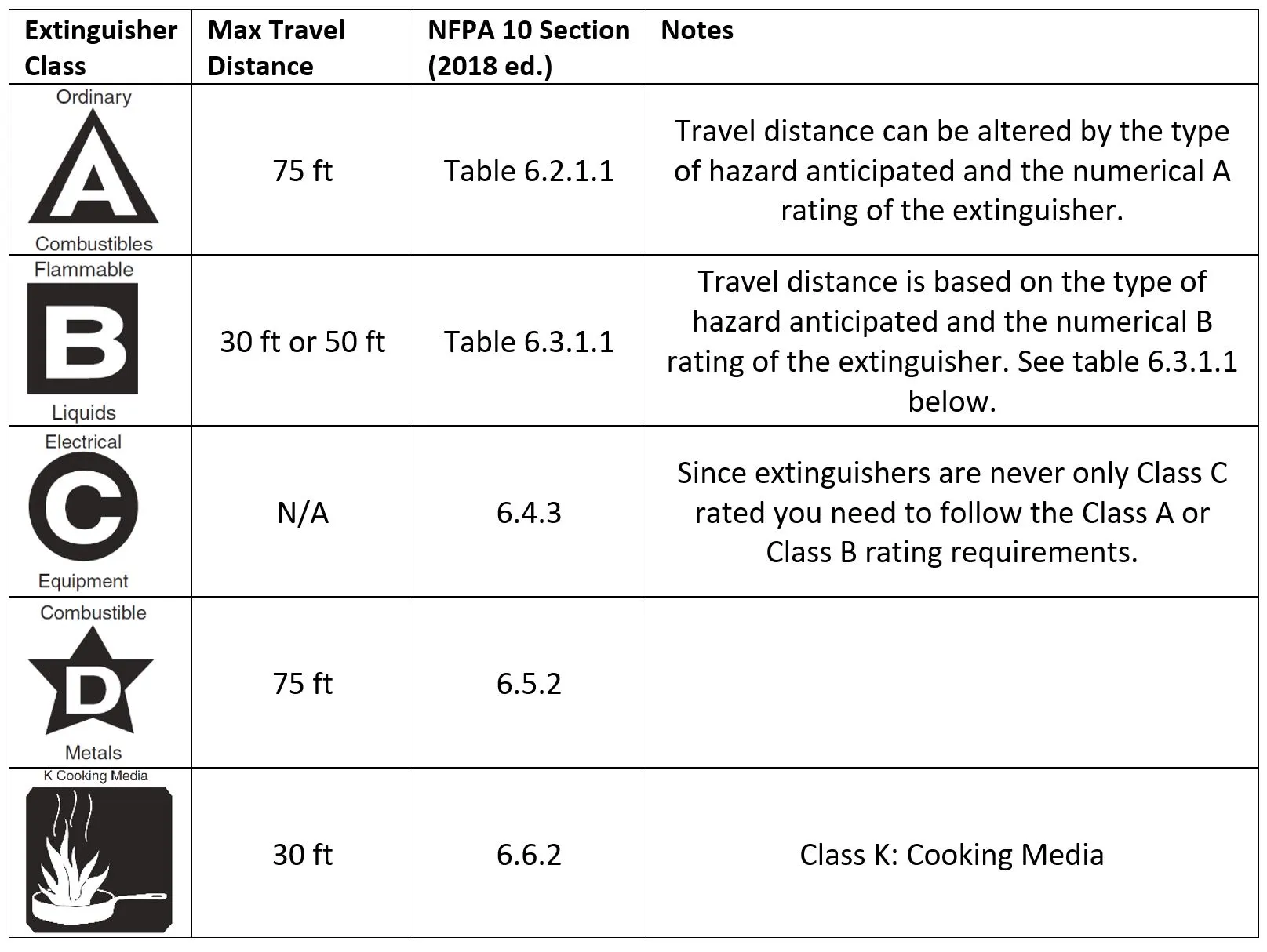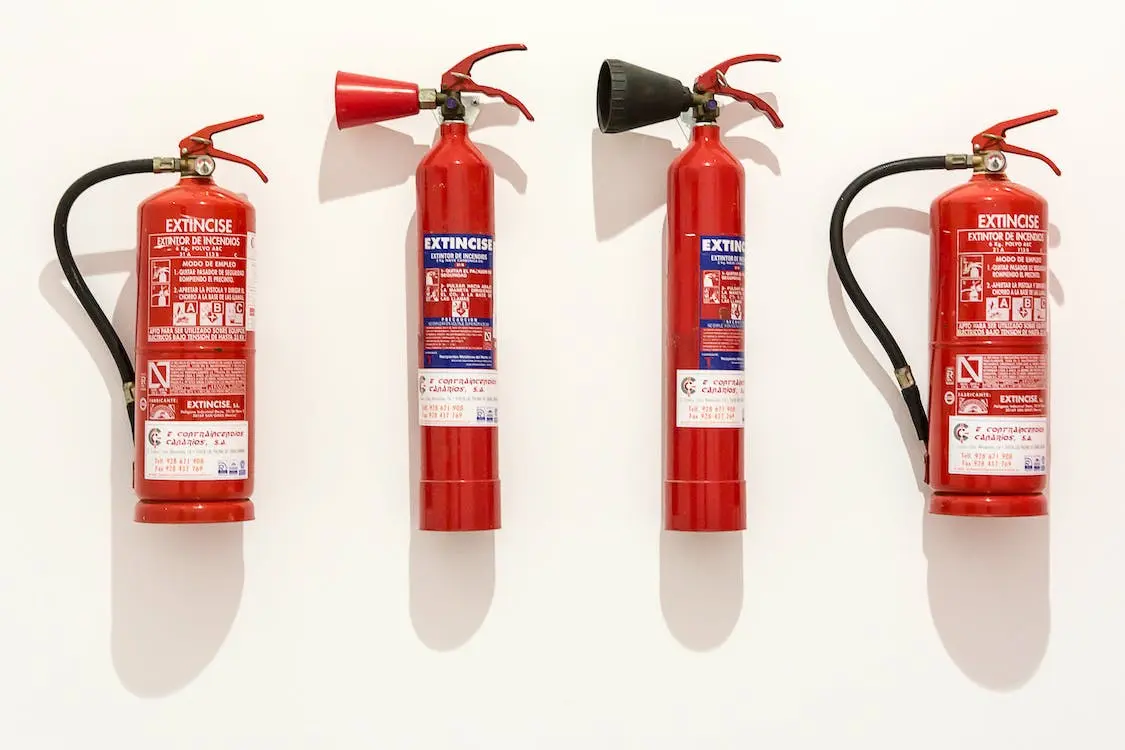When fire breaks out, every second counts. A fire extinguisher stored in the correct spot can mean the difference between a minor incident and a full-blown disaster. This guide explores not just where to keep fire extinguishers, but why these locations are critical in both homes and workplaces. We’ll weave in essential fire safety insights, accessibility considerations, types of extinguishers, OSHA and NFPA standards, and unique expert wisdom—all aimed at helping you create the ultimate fire safety plan.
Best Places to Keep a Fire Extinguisher
1. The Kitchen
Kitchens are the most common ignition zones in homes and many workplaces. Cooking equipment is the leading cause of residential fires, accounting for nearly half of all home structure fires and fire injuries. That’s why the kitchen should be the priority location for your extinguisher.
Placement and Type
-
Being within 30 feet of the stove ensures quick access.
-
Avoid mounting it directly next to the stove—heat, flames, or smoke may block access.
-
Keep one just outside the kitchen if space is tight.
-
Use an ABC-rated extinguisher, suitable for grease (Class K/B), electrical, and combustible materials.
Kitchen-Specific Fire Safety Tips
-
Master the P.A.S.S. method—Pull, Aim, Squeeze, Sweep—for effective response.
-
Keep additional tools: oven mitt, pan-fitting lid, baking soda—to smother small grease fires.
Expert Insight
Captain Michael Kozo from the NYC Fire Department suggests storing fire extinguishers just outside the kitchen to reduce false alarms from smoke, yet keep them close enough for emergencies.
Summary
-
Location: 10–30 ft from the stove, slightly away to avoid hazards.
-
Type: ABC-rated (ideally K for grease fires).
-
Why: Cooking fires are fast and unpredictable; quick access saves lives and property.
2. Near Heating Sources: Fireplace, Space Heaters, and More
Heating equipment is responsible for around one-fifth of residential fires. Whether it’s a fireplace, furnace, space heater, or even a candlelit desk, having a fire extinguisher nearby is crucial.
Why It Matters
-
Safety clearance: Space heaters and open flames should be at least 3 feet away from combustible materials.
-
Fall and spark accidents: Combustibles near heating can easily ignite—an extinguisher doubles as immediate defense.
Strategic Placement
-
Mount just outside or adjacent to the heat source, at a safe distance to remain accessible even during a fire.
-
Maintain a clear area around the extinguisher—no stacking boxes or draping fabrics.
-
For common paths of travel, such as hallway-adjacent to a fireplace, keep it visible and easy to reach.
Workplace Consideration
-
In offices or workshops, mechanical and electrical rooms generate heat and electrical fire risks—placement here is essential.
-
Documented fire prevention plans often mandate extinguishers near heat-producing equipment.
Pro Tip
Use wall-mounted cabinets near these zones to prevent obstruction and conform to ADA/protrusion rules.
Summary
-
Location: Within safe reach of fireplaces, heaters.
-
Keep clear: Minimum 36″ clearance; visible along traffic routes.
-
Insight: A well-positioned extinguisher turns a heat hazard into a manageable risk.
3. Every Floor Counts: Basements, Attics, and Stair Access
Fires don’t follow a predictable path—and neither should your safety plan. Extinguishers must be placed on every level of a building—ground floor, basement, and attic included. NFPA and OSHA both support this strategy.
Home Guidance
-
Basements: Wiring and storage combo fuels fire risk. Place one near the stairs.
-
Attics: Heat and electrical systems generate hot spots. Keep extinguishers accessible—not sealed away.
-
Second stories: Hallways near bedrooms should have visible extinguishers in an emergency.
Workplace and Public Buildings
-
OSHA mandates a maximum travel distance—75 ft for Class A, 50 ft for Class B hazards—meaning strategic placement on each floor is essential.
-
For stair landings, place extinguishers adjacent to stairways in multistory buildings.
Placement Best Practices
-
Mount extinguishers at waist to shoulder height (top handle under 5 ft).
-
Avoid obstructing travel routes—hallway clutter is a fire safety no-no.
-
Mark extinguishers with signage for easy identification—even in smoke-filled conditions.
Unique Insight
If you have a home expansion or multi-use annex (guest suite, granny flat), treat each as its safety zone—complete with extinguisher coverage.
Summary
-
Locations: Every floor, basement, attic, and stair landings.
-
Placement: Visible, unobstructed, appropriately mounted.
-
Why: Prevent floor-to-floor fire spread, comply with OSHA/NFPA, and ensure preparedness.
4. Garage and Workshop: Combustibles and Electrical Risks
Garages and workshops brim with flammable liquids (gas, oil, solvents), tools, and electrical equipment, making them prime fire zones. Impact Fire Services recommends placing extinguishers in these areas, especially when flammable materials are present.
What Makes Garages Risky
-
Combustible liquids spray easily during woodworking or car maintenance.
-
DIY sparks from tools or a vehicle battery can ignite vapors.
Best Placement Strategy
-
Mount near the primary exit, giving a clear escape route.
-
Keep within 50 feet of flammable liquid storage to meet OSHA Class B standards.
-
Label the extinguisher clearly—ideally with flammable liquid (Class B) signage.
Homeowner Tip
Garages often spill chemicals; installing an ABC or BC-rated extinguisher handles most liquids and electrical ignition sources.
Accessibility Focus
Ensure the extinguisher is mounted so the carrying handle is 3–5 ft above the floor. Use recessed cabinets in narrow spaces to obey ADA protrusion rules.
Pro Insight
If heavy chemical use or battery charging is frequent, consider adding CO₂-class extinguishers or fast-flow units for flammable gas incidents.
Summary
-
Location: Near exits, within 50 ft of flammable liquids.
-
Why: Stops early fire, meets OSHA/NFPA standards.
-
Type: ABC/BC, optionally CO₂.
5. Bedrooms and Sleeping Areas: Overnight Protection
Nighttime brings vulnerability. Most fatal home fires occur at night when residents are asleep. Having extinguishers in or near bedrooms can provide critical response time.
Why Bedrooms Matter
-
Fires can start from electric blankets, charging devices, or candles.
-
Smoke spreads rapidly; immediate access reduces fatalities.
Placement Guidelines
-
Install in hallways outside bedrooms, close to sleeping zones.
-
A small unit inside each bedroom, especially children’s rooms, is a smart safety upgrade.
Age-Inclusive Access
Guides suggest no age limit on extinguisher placement; even kids can be trained to use them safely. Familiarity breeds readiness and lowers panic.
Key Recommendations
-
Ensure visibility in dim corridors—mount at shoulder height and keep the area clear.
-
Add a small night-light or glow-in-the-dark tags for easy location in low light.
-
Incorporate extinguisher checks into routine bedroom safety audits (battery smoke alarms, exit plans).
Unique Insight
Always pair extinguishers with a family/fire drill plan—practicing exit routes while gracefully grabbing the extinguisher increases confidence and survival odds.
Summary
-
Locations: Hallways near bedrooms, inside rooms if possible.
-
Why: Nighttime fires escalate fast; you need early response tools.
-
Insight: Pair with drills, lights, and accessible storage.
6. Exit Paths: Hallways, Doors, and Fire Escapes
Emergency exits and paths are prime zones for extinguisher placement. OSHA and safety experts emphasize placing extinguishers along normal paths of travel, especially near exits.
Why It’s Crucial
-
In emergencies, people instinctively head to exits. An extinguisher along that route ensures a timely response.
-
Mounting near exits means you always move toward escape, reducing the risk of becoming trapped.
Placement Tips
-
On either side of the fire escape doors, exit corridors, and main hallways.
-
Maintain ADA codes: handle height under 5 ft; protrusion limited to 4 inches.
-
Provide proper signage above and around extinguishers for visibility under stress or low light.
Worksite Application
-
In offices, place extinguishers near meeting rooms, electrical panels, and mechanical rooms.
-
OSHA requires a clear travel distance: 75 ft for Class A fires, 50 ft for Class B.
-
In large open-plan areas, spaced uniform coverage ensures no blind spots.
Visibility and Accessibility
-
Use wall brackets or cabinets to prevent blockage; avoid placing near shelving or furniture.
-
For high-traffic corridors, consider a recessed cabinet so the handle stays under a 4-inch protrusion.
Summary
-
Locations: Along normal egress paths—hallways, exits, fire escapes.
-
Why: Supports instinctive escape response and meets regulations.
-
Insight: Combine with clear signage and routine path inspections.
7. Mechanical and Electrical Rooms: High-Risk Zones
Mechanical and electrical rooms house equipment with high ignition potential—think circuit breakers, servers, and HVAC units. Water or foam extinguishers alone aren’t enough; ABC or CO₂ types are recommended.
Risk Profile
-
Equipment overheats, sparks, or fails, triggering electrical fires.
-
Oil leaks in HVAC units or motor rooms pose a serious fire risk.
Placement Strategy
-
Mount outside the entry, but close enough to the room to access before flames spread.
-
Keep with clear signage and unobstructed pathways.
OSHA and NFPA Requirements
-
OSHA requires Class C hazards to share placement with Class A/B extinguishers based on the surrounding risk.
-
NFPA guidelines suggest using fast-flow extinguishers near pressurized gas or liquid storage.
Ideal Types
-
CO₂ extinguishers are effective for live electrical fires, leaving no residue.
-
For combined risks (oil + electricity), use ABC dry chemical.
Insight
Have a dedicated inspection log for these zones—monthly checks are critical; these rooms may house expensive electronics prone to damage from extinguisher discharge residue.
Summary
-
Locations: Just outside mechanical/electrical enclosures.
-
Type: ABC or CO₂, depending on risk.
-
Insight: Pair extinguisher checks with equipment maintenance cycles.
Unique Insights to Boost Your Fire Safety Plan
-
Tailored extinguisher strategy: Don’t treat all zones the same. Cooking zones get K/ABC, garages need BC/ABC, and offices require CO₂ or ABC near electrical gear.
-
Three-pronged approach: Install, maintain, and train:
-
Inspect monthly, service annually, recharge after use—per NFPA/OSHA guidelines.
-
Test pressure gauges and look for corrosion.
-
Train occupants with the PASS technique, triage rules (fight small fires only), and evacuation protocols.
-
-
Accessibility compliance: Handle under 5 ft, no protrusion over 4 in, keep 36 in clear space around.
-
Create a fire extinguisher inventory: Record location, type, installation date, last inspection/service—helps streamline audits.
Fire Safety Checklist: Ensure Compliance and Readiness
| Checkpoint | Task |
|---|---|
| Kitchen | One ABC/K extinguisher, mounted 10–30 ft away, label visible |
| Heating Zones | Extinguisher close but away from heat, clear access area |
| Every Floor & Stair Landing | At least one extinguisher per floor, visible on staircase landings |
| Garage/Workshop | Mounted near exit, BC/ABC-rated, within 50 ft of flammable liquids |
| Bedrooms/Sleep Areas | Small extinguisher nearby, hallway placement, optionally in rooms |
| Exit Paths | Cabinet by fire escapes and main corridors, clear travel path |
| Mechanical/Electrical Rooms | CO₂ or ABC placed just outside, signage, maintained regularly |
| Records & Training | Monthly checks, annual servicing, P.A.S.S. drills for all occupants |
Fire Extinguisher Installation Requirements
According to OSHA, to prevent fire extinguishers from being moved or damaged, they should be mounted on brackets or in wall cabinets with their carrying handles placed 3-1/2 to 5 feet above the floor, depending on the type of extinguisher. Those with gross weights of no more than 40 pounds (lbs.) should be mounted with their carrying handles no higher than 5 feet from the floor.
Larger fire extinguishers (over 40 lbs. gross weight) need to be mounted at lower heights, with their carrying handles no more than 3-1/2 feet from the floor. All hand-portable fire extinguishers need to have at least 4 inches of clearance between their bottoms and the floor.
Before installing any portable fire extinguisher, check the label to be sure it is approved by a nationally recognized testing laboratory. [29 CFR 1910.157(c)(2)]
Also, NFPA 10 addresses extinguisher placement; it uses the term “maximum travel distance to extinguisher”. This means that at any point inside the building, you should never have to travel more than the maximum distance to reach an extinguisher. It is important to ensure the distance being measured is the actual distance a person would need to walk to get the extinguisher and that occupants are not expected to walk through walls.


Importance of Choosing a good placement for your Fire Extinguisher
- The best placement for Fire extinguishers enhances easy accessibility during a fire emergency. It should not be so far away and not obstructed by anything.
- It enhances visibility. A fire extinguisher that is hidden or obscured by other objects is of no use in an emergency; this is why good placement is important.
In conclusion, aside from considering the “Best Places to Keep a Fire Extinguisher“, you should also always follow local fire safety codes and regulations when determining the placement of fire extinguishers in the workplace. Additionally, regularly inspect and maintain fire extinguishers to ensure they are in proper working condition. It is also important to provide proper training to employees on how to use fire extinguishers safely and effectively.
Remember to choose fire extinguishers suitable for different types of fires (ABC multipurpose extinguishers are common) and to regularly inspect and maintain them. Also, ensure that everyone in the household knows how to use a fire extinguisher and understands the importance of fire safety measures.
Conclusion: A Proactive Fire Safety Strategy
Effective fire safety is more than possession—it’s ensuring extinguishers are strategically placed, strictly maintained, and regularly reviewed, all while educating occupants. From kitchens and hallways to garages and mechanical zones, the seven locations covered here offer a holistic strategy designed for speed, compliance, and peace of mind. Follow this blueprint, customize it to your unique space and use case, and you’ll not only meet OSHA/NFPA standards but create a safer, more responsive environment for everyone.
Related Posts
10 Requirements for Fire Extinguishers On A Boat: A Clear Guide
How Can I Identify My Fire Extinguisher Expiry Date
How to Choose the Right Fire Extinguisher Sizes
What Do The Symbols On A Fire Extinguisher Indicate?
What Kind of Fire Extinguisher is Best for Electrical Fires?
11 Things You Should Check During Fire Extinguisher Testing
A seasoned Health and Safety Consultant with over a decade of hands-on experience in Occupational Health and Safety, UBONG EDET brings unmatched expertise in health and safety management, hazard prevention, emergency response planning, and workplace risk control. With a strong passion for training and coaching, he has empowered professionals and organizations to build safer, more compliant work environments.
Certified in globally recognized programs including NEBOSH, ISO standards, and OSHA regulations, he combines technical know-how with practical strategies to drive health and safety excellence across industries. designing comprehensive HSE management systems or delivering impactful safety training, whether he] is committed to promoting a culture of safety and continuous improvement.
